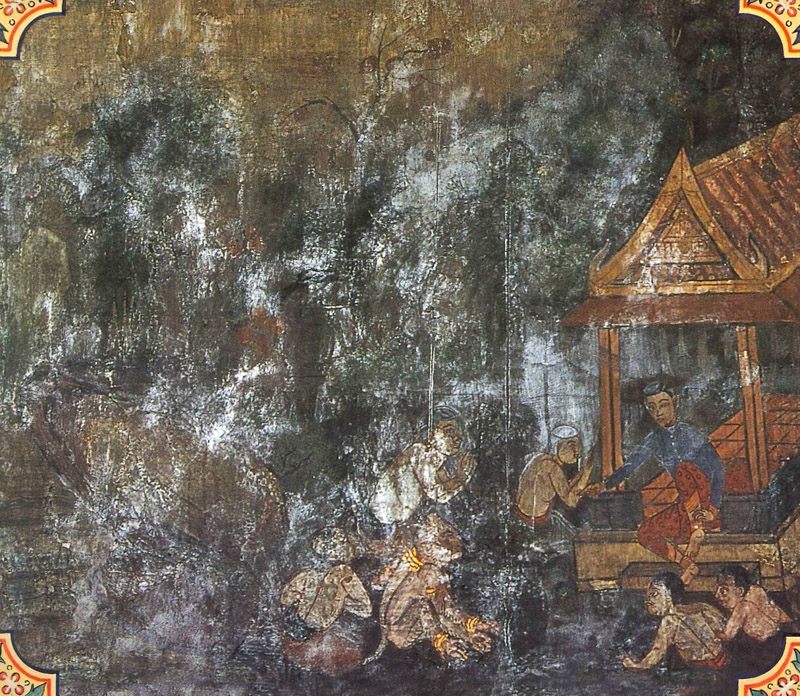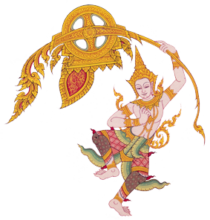
The Bodhisatta was once a king’s advisor. One day, while the king was swimming with some of his wives in his royal park, the chief queen’s slave dozed off, and a monkey stole her pearl necklace. The monkey wore it around her neck only briefly before hiding it away in a hole in a tree to avoid problems with other monkeys. When the slave awoke and saw that the necklace was gone, she tried to avoid blame for her blunder by yelling out that a man had just run off with it. While the guards spread out in search of the thief, a frightened peasant outside the park heard the commotion inside and fled out of caution, even though he didn’t know what was going on. But the guards saw him running off and, assuming he was the thief, they gave chase.
The guards beat a confession out of the peasant, who feared they would kill him if he denied stealing the necklace. When asked where the necklace was, he claimed, hoping he would get some help in his defense, that the treasurer forced him to take it, and he had given it to him. When the treasurer was brought before the king, he figured having a second high officer also charged for the crime would eventually help prove his innocence, so he confirmed the accusation and said he had passed the necklace to the king’s chaplain. The chaplain also strategically confessed and he named the palace’s chief musician as his link in the plot, figuring this would make his time in captivity pass more pleasantly. The musician then chose to indict a prostitute for the same reason. She, in turn, denied having any part in the theft.
Sunset came before the matter could be resolved, so the king decided to continue the investigation the next day. The Bodhisatta did not think the peasant could have snuck into the park, nor could anyone inside have got out without being seen. He was convinced that all five were innocent and the chain of accusations had just been made for tactical reasons. He figured that most likely a female monkey had stolen the necklace. The Bodhisatta requested and received permission from the king to carry out his own investigation. He had his servants carefully listen to the suspects’ conversations that night, and these confirmed their innocence in the Bodhisatta’s mind. So he turned to finding the necklace.
The Bodhisatta put beaded necklaces around the necks, wrists, and ankles of many of the park’s monkeys and ordered men to watch them carefully. As expected, the thieving monkey grew jealous of the others who were flaunting their beads, so she put on her pearls. When the men saw the queen’s necklace, they frightened the monkey and made her drop it. They took it to the Bodhisatta, who gave it to the king. The king was so pleased by the Bodhisatta’s wisdom, he showered him with praise and treasure.
In the Lifetime of the Buddha
One day a jewel went missing from the king’s turban, and everyone residing and working in the palace was searched. This worried them greatly. When Ananda, one of the Buddha’s top disciples, arrived at the palace, where he taught dharma to the king’s wives, he heard what had happened. He went to the king and proposed getting the jewel back by allowing the thief to return it anonymously, since this would get results without causing stress to innocent people. After a few days, his plan worked.
When the Buddha heard some of his disciples talking about what Ananda had done, he told them this story so they knew that he himself had also once cleverly retrieved lost jewels and spared innocent people from worry.
The king from the past was an earlier birth of Ananda.
